- Make It Yourself Lavender Heart-Shaped Bath Bombs!
- 20 Things You Never Knew About “Down There”
- 12 Best Foods For Those Suffering From Arthritis Pain
- 12 Personal Hygiene Mistakes Almost Everyone Makes (Mom Never Told You About #4!)
- 15 Medicinal Plants And Herbs From The Cherokee People
- 12 Mind-Blowing Benefits Of Drinking Coconut Water During Pregnancy
- 12 Outstanding Winter Foods That Won’t Fatten You Up Like A Christmas Turkey
Top 10 Foods that Could Literally Save Your life

Photo credit: bigstock
There is no one on this earth, not your mother, not your doctor, not even your friends, who would tell you that you can eat less green leafy veggies and it’s OK. Leafy greens such as collards, mustard, chard, kale, and spinach are probably the best, most nutritionally dense foods you can eat. They have vitamins, essential minerals, antioxidants, and phytochemicals, which can prevent arteries from hardening. All these things combined in these vegetables can kill off the free radicals in your body, which can stop cancer cells from forming and growing.
Mother Nature put almost everything on this earth to feed us or to heal us. Only man corrupts these things and has turned what should be healthy and good for us into something cancer causing and bad for us.
If you want to live a longer, healthier life, take a look at the top 10 foods you must include in your diet. For some people, adding these foods can literally save your life.
1. Garlic
Besides tasting great and give you that kissable breath (NOT) garlic is very nutritious and has several active compounds that are great for your overall health.
Numerous studies have proven that garlic has very positive effects on heart health. It lowers cholesterol levels and blood triglycerides (1, 2). It also lowers platelet aggregations, which means it can also reduce your risk of stroke (3, 4). Garlic has also been shown to lower blood pressure (5).
Garlic is a natural antimicrobial, which means it can kill fungi and bacteria (6, 7). The alllicin in garlic has been shown in studies to kill the so called Super Bugs, MRSA, which is an antibiotic resistant type of bacteria (8).
You can eat garlic fresh or take supplements if you don’t fancy the taste. Fresh garlic really is the best way to go, however.
Garlic has so much to offer us, so much more than can be listed here. It’s been thoroughly studied and can dramatically improve heart health, so why not add some to your meals daily?

Photo credit: bigstock
2. Watercress
This tasty green always ranks high on the super foods lists and it’s really no surprise. A single cup of watercress give you more than your daily recommended intake of vitamin K, which regulates the body’s blood clotting ability and reduces plaque on the walls of the arteries. It can also lower inflammation in the body, which is linked to many chronic diseases, such as arthritis. If you ate watercress every day for two months, you would reduce your risk of cancer, limit DNA damage to your white blood cells, and lower your triglycerides by 10 per cent. Eat more watercress! 10,000 deer can’t be wrong!
Watercress has a slightly peppery flavor that adds an extra flavorful crunch to sandwiches, works great in salads, and can even be added to soups without fear of losing its nutrients during cooking. Any recipe where you can use lettuce or spinach, you can use watercress in its place. Great creative and think watercress!
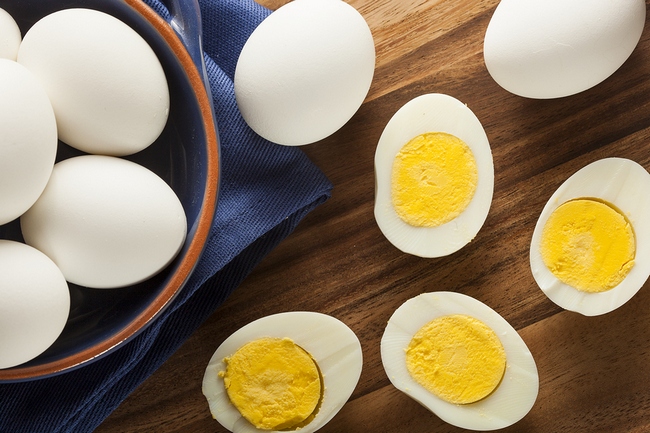
Photo credit: bigstock
3. Eggs
When we say eggs, we mean the egg, the whole egg, and nothing but the egg, yolk and all! Many people needlessly throw out the yolk thinking that they are high in cholesterol, but that isn’t really true. Egg yolks hold all the nutrients while the white holds the protein. Dumping all the nutrients just doesn’t make sense.
Cholesterol in your diet does not add up to cholesterol in the blood. Study after study shows that eating eggs is not associated with any disease or health problem, still, this old myth about egg yolks refuses to die (9, 10, 11).
Eggs (and their yolks) contain lutein and zeaxanthin, powerful antioxidants that protect our eyes from disease (12, 13). One large egg has 6 grams of protein and contains all the essential amino acids that your body cannot make for itself. It also contains choline (14), an important part of our brain health, not to mention vitamins A, B12, B5, and B2, iron, selenium, and much more (15)!
Eggs are super satisfying, too. So stop saying no to the wonderful egg and enjoy a couple of eggs every single day!
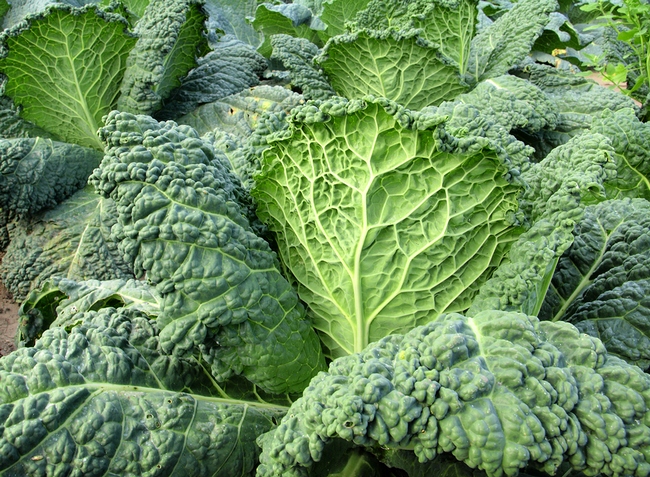
Photo credit: bigstock
4. Collard greens
Of all the leafy greens you could eat, collard greens are probably the best at binding the bile acids in your stomach, which can lower cholesterol levels. It can also give your protection from certain types of cancer. Collard greens also have a special type of phytochemicals that support the body’s natural system of detoxification.
Collard greens are great at lowering cholesterol levels. In fact, in recent studies, steamed collard greens performed better than broccoli, cabbage, kale, and mustard greens at lowering cholesterol! Collard greens bind bile acids (which are made of cholesterol) and remove them from the body. Read more why they are considered one of the healthiest vegetables ever.
Although boiling collard greens is a common way to making “soul food”, unless you drink the broth they are boiled in, you will miss out on the nutrients you are looking for. Steaming collard greens is the best way to keep the nutrients in this food. You can also try kneading them a bit with some olive oil for a few minutes before steaming to help make them softer.
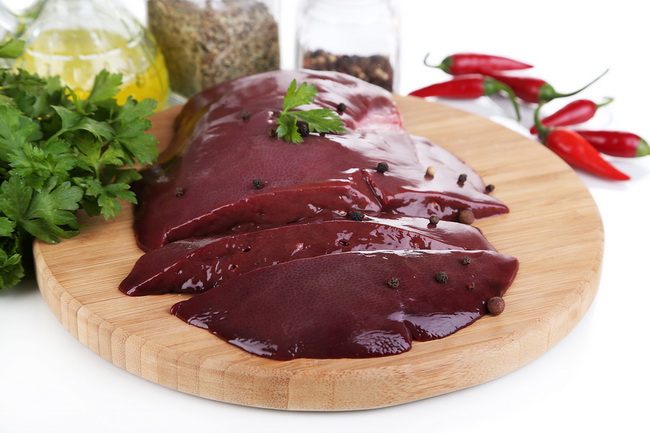
Photo credit: bigstock
5. Liver
Don’t make that face! Humans have been eating animals for thousands of years (maybe even millions of years) and our bodies are well adapted to eating meat and organ meat. Our hunter-gatherer ancestors didn’t just eat the breast meat, folks, they ate every piece of meat on an animal once they killed it; the brain, the liver, the heart, even the testicles.
Organs, such as the liver, are some of the most nutritious parts of an animal and the liver is the most nutritious of all the organ meats. In fact, the liver has so many nutrients that some people have called it Mother Nature’s Multivitamin.
One serving of liver includes folate, copper, Vitamin A, B2, B12, B3, B5, B6 and many others (16).
If you want to be healthy and eat like our ancestors, eat more organ meats, especially liver. Just one serving a week will do the trick and it will dramatically improve your average intake of many vital nutrients.
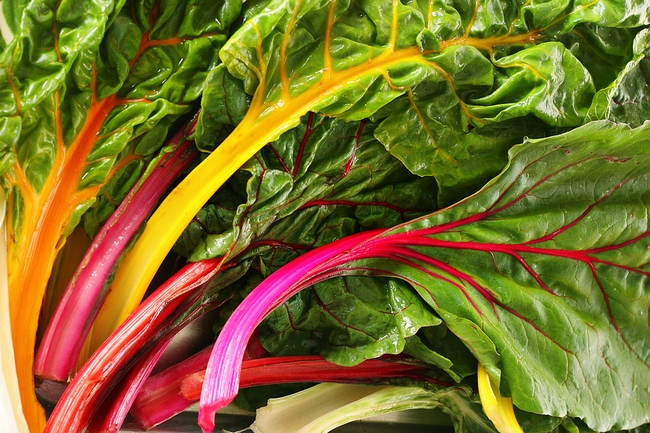
Photo credit: bigstock
6. Swiss chard
This tasty green is a great source of two very important but little known antioxidants called kaempferol and syringic acid. Syringic acid stabilizes blood sugar levels and kaempferol protects your body from cancer causing toxins. These antioxidants also reduce inflammation and lower your risk of diabetes, heart disease, and many other chronic diseases. If you want to avoid arthritis, eat more foods like Swiss chard that lower inflammation levels in the body.
You can vastly increase your antioxidant intake, and save tons of calories, by using Swiss chard instead of tortillas to make burritos, enchiladas and wraps. Cut the leaves off the stems and steam the leaves and use them in place of any recipe where you would typically use tortillas. Try using these greens in sandwiches instead of iceberg lettuce, which has almost no nutritional value. Swiss chard is also great in salads, and steamed with a bit of garlic and olive oil, is a great side dish all by themselves.
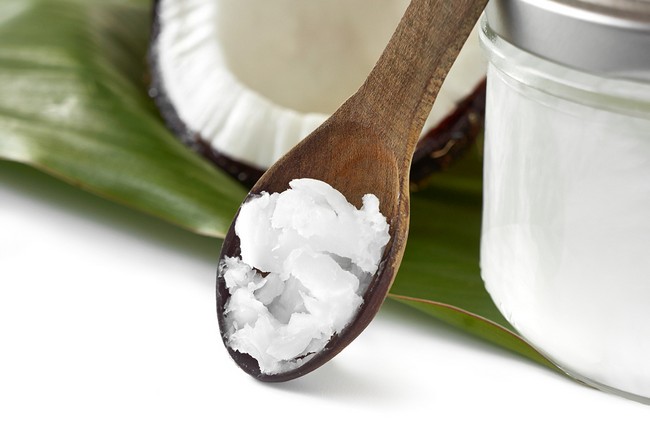
Photo credit: bigstock
7. Coconut oil
The best oil for cooking, hands down! Coconut oil is almost pure saturated fat, which means it’s high heat resistant, unlike some other oils. Don’t let the words saturated fats scare you off. Most of these fats are what is called medium chain and the fatty acid that coconut oil has the most of is 12-carbon Lauric acid. These types of fats are perfect for weight loss as they increase the metabolism and give you a feeling of satisfaction when you eat (17, 18, 19). The antimicrobial properties in lauric acid are very efficient killers of bacteria, fungi, and viruses (20).
Coconut oil is loaded with healthy vitamins such as A, E, and K. This healthy oil has gotten some bad rap in the past because it contains saturated fats but the truth is that the saturated fats are nowhere near as harmful as the ones you find in highly processed vegetable oils. Unlike vegetable oils, coconut oil won’t increase your LDL (bad) cholesterol levels and reduces injury or damage to your arteries. Once you know the truth, you will see the coconut oil is the best type of oil you can use hands down!
Believe it or not, eating coconut oil regularly can lead to improvements in cardiac risks such as the lowering of cholesterol and triglyceride levels (21, 22).
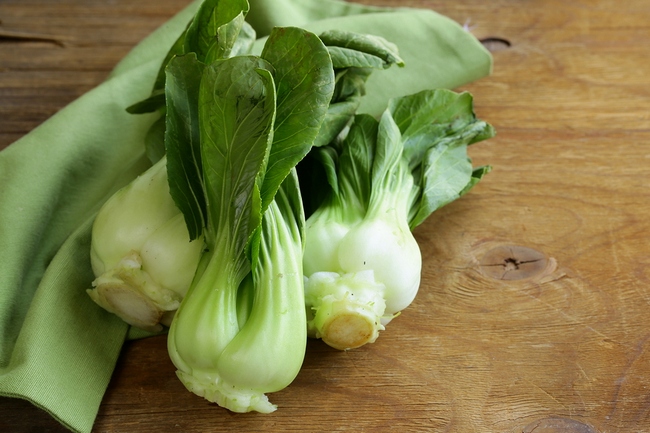
Photo credit: bigstock
8. Bok choy
This green is perhaps one of the best sources of potassium around, which is important for lowering blood pressure levels and building muscle. Bok choy can also improve your immune system because it’s full of vitamin A, which is known to increase white blood cells activity as well as the way your body responds to toxins.
Now don’t confuse bok choy with Napa cabbage. They look the same, but they are vastly different. Bok choy has no less than 70 antioxidant compounds which kill free radicals in the body. Bok choy is also the 11th richest source of vitamin A, zinc, and even some omega-3s.
Just one cup of steamed bok choy has 64 percent of your recommended intake of vitamin K, 59 percent of vitamin C, and 40 percent of vitamin A. There are tons of other vitamins and minerals in this cousin to cabbage so try to eat at least two servings per week to help fight cancer and possibly save your life by avoiding other chronic diseases.
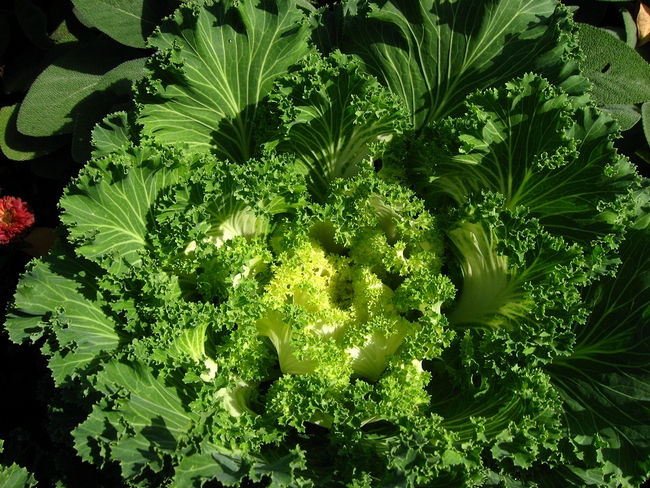
Photo credit: bigstock
9. Kale
Kale is your best choice if you want to beat cancer as it has tons of cancer fighting compounds called glucosinolates (23, 24). It also has kaempferol, which is another cancer fighter. It also protects your heart by lowering blood sugar levels, reduces inflammation, and supports healthy bones. Kale also has tons of antioxidants, zeaxanthin and lutein, which protect you from eye diseases.
Kale is another green that binds bile acids in the stomach which lowers cholesterol levels. It’s interesting to note that kale has more benefits after it has been lightly steamed than when it’s raw. It’s as if Mother Nature is encouraging us to eat it!
Kale also supports the body’s detox system with its 45 different flavonoids. Kale leads the pack in reducing inflammation and oxidative stress in the body that can lead to various chronic diseases.
All of this in one little green leafy veggie. Kale really does its best to impress!

Photo credit: bigstock
10. Blueberries
So much nutrition in one sweet little blue treat! Blueberries are the king of antioxidant power. Blueberries always place near the top of the antioxidant rich foods list. Several studies show that blueberries help lower blood pressure and markers of that bad (LDL) cholesterol (25). Older person can benefit from blueberries as studies show that they can improve their memories (26).
Blueberries are often called the superfood of superfoods and it’s really no surprise. Blueberries are low on the glycemic index so they are perfect for diabetics. Recent studies show that freezing blueberries actually increases their antioxidant levels, so you should always have a bag or two of organic blueberries in the freezer. You can eat them raw, or put them in just about anything, from smoothies to yogurt.
Blueberries are a great tasting anti-cancer food and many studies back this up. They are low in carbs, so even those on low carb diets can enjoy some blueberries.
Continue to Sources
Sources:
7. Aac.asm.org
11. Bmj.com
12. Iovs.org
14. Fasebj.org
18. Jn.nutrition.org
19. Ncbi.nlm.nih.gov
20. Ncbi.nlm.nih.gov
23. Clincancerres.aacrjournals.org
25. Jn.nutrition.org
26. Ncbi.nlm.nih.gov
(By the way, if you’re enjoying this article, you may want to subscribe to the Naturalon’s free newsletter; get breaking news alerts on GMO’s, fluoride, superfoods, natural cures and more… You privacy is protected. Unsubscribe at any time.)





























